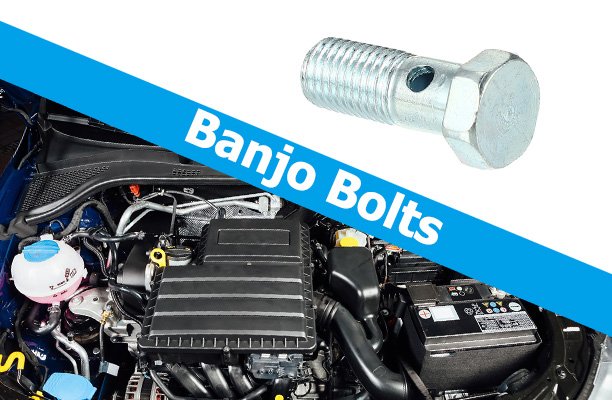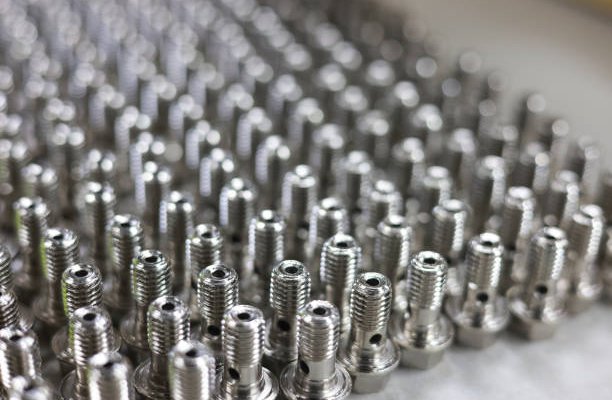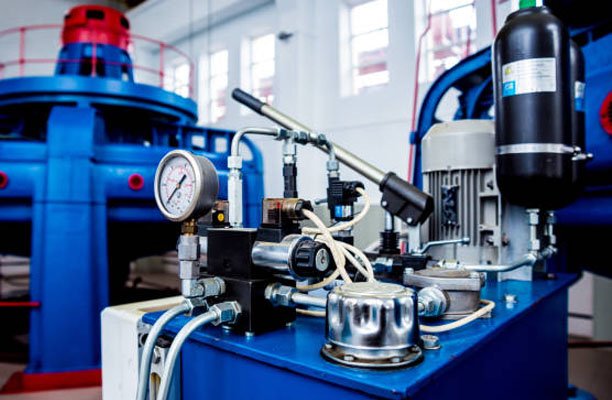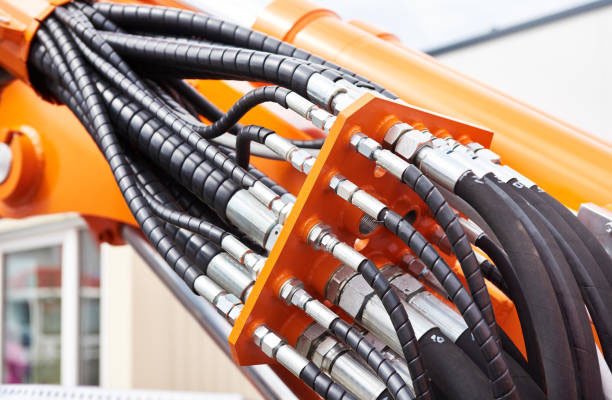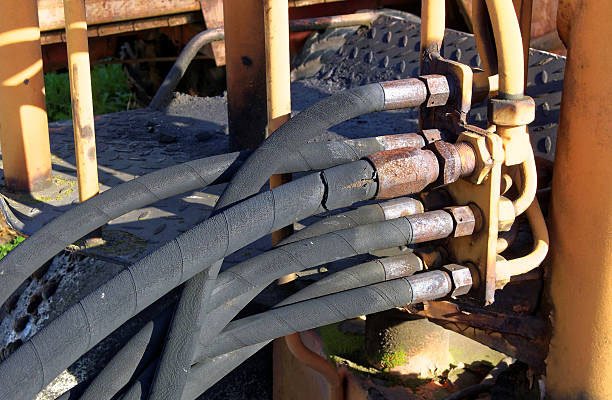Introduction
Banjo bolts are essential components widely used in automotive, hydraulic, and industrial applications, playing a crucial role in ensuring fluid-tight connections between pipes, hoses, and components. Their unique design allows fluid transfer through a hollow bolt and a banjo fitting, making them indispensable in brake systems, fuel lines, and hydraulic circuits. Understanding the banjo bolt standard is vital for achieving safe, efficient, and leak-free systems.
In this guide, we will explore everything you need to know about banjo bolt standards, including dimensions, materials, thread types, and application guidelines. Whether you’re a mechanic, engineer, or DIY enthusiast, this resource will help you select and install banjo bolts with confidence.
History and Evolution of Banjo Bolts
Origin of the Banjo Bolt Design
The term “banjo bolt” originates from the distinctive shape of the fitting resembling a banjo musical instrument. Early applications date back to the rise of hydraulic braking systems in the mid-20th century, where engineers needed a compact and effective method to channel fluid through tight spaces while allowing rotational freedom.
Evolution of Standards Over Time
Initially, banjo bolts were produced without universal dimensional or material guidelines, leading to compatibility issues across brands and regions. Over time, the establishment of international standards such as ISO, DIN, JIS, and SAE unified the industry, making it easier for manufacturers and end-users to adopt standardized sizes and threads. Today, these standards ensure interoperability and safety across automotive, industrial, and aerospace sectors.
Understanding Banjo Bolt Standards
Definition of Banjo Bolt Standards
Banjo bolt standards define the dimensional, material, and thread requirements to ensure compatibility, performance, and safety. These standards regulate crucial parameters such as thread pitch, banjo eye dimensions, bolt length, and sealing surfaces.
Governing Bodies and Standardization Organizations
- ISO – International Organization for Standardization
- SAE – Society of Automotive Engineers
- DIN – Deutsches Institut für Normung
- JIS – Japanese Industrial Standards
These organizations publish technical documents specifying how banjo bolts should be manufactured and tested, depending on their application.
Metric vs. Imperial Standards
Banjo bolts are available in both metric and imperial measurements. The most common metric sizes include M10, M12, and M14, while imperial sizes often follow British Standard Pipe (BSP) or Unified National Fine (UNF) threads. Choosing between them depends on the region, industry, and existing system specifications.
Common Banjo Bolt Materials

Steel
Steel is one of the most commonly used materials for banjo bolts due to its excellent strength and cost-effectiveness. Typically zinc-plated or chromate-treated to resist corrosion, steel banjo bolts are widely used in automotive braking and fuel systems. However, steel can be prone to rust if the protective coating wears off over time.
Stainless Steel
Stainless steel banjo bolts offer superior corrosion resistance, making them ideal for marine, chemical, and high-humidity environments. They are frequently used in high-performance automotive and industrial applications where durability and longevity are critical. While more expensive than carbon steel, stainless steel ensures a longer service life without sacrificing strength.
Brass
Brass banjo bolts are favored for their excellent machinability and corrosion resistance, especially in low to medium-pressure fluid systems. They are often found in fuel, oil, and some hydraulic applications where vibration and temperature variations are less severe.
Titanium
Titanium banjo bolts are lightweight and possess exceptional strength-to-weight ratios, making them highly desirable in motorsports, aerospace, and other applications where weight reduction is a priority. Additionally, titanium is naturally corrosion-resistant, even in harsh environments, but comes at a premium cost.
Pros and Cons of Each Material
| Material | Pros | Cons |
|---|---|---|
| Steel | High strength, affordable | Susceptible to corrosion without coating |
| Stainless Steel | Excellent corrosion resistance, durable | Higher cost |
| Brass | Good corrosion resistance, easy to machine | Lower strength compared to steel |
| Titanium | Lightweight, strong, corrosion-resistant | Very expensive |
Banjo Bolt Dimensions Explained
Thread Size
The thread size refers to the nominal diameter of the threaded portion of the bolt. Common metric thread sizes include M8, M10, M12, and M14, while imperial sizes are usually expressed in inches or BSP measurements.
Thread Pitch
Thread pitch indicates the distance between thread peaks. For example, an M10 x 1.0 banjo bolt has a thread diameter of 10mm with a 1.0mm pitch. Accurate thread pitch matching is critical to prevent leaks and ensure mechanical compatibility.
Bolt Length
The bolt length is measured from under the bolt head to the end of the threaded section. Proper bolt length ensures full engagement without interfering with fluid passages inside the banjo fitting.
Banjo Eye Size
The banjo eye is the round, hollow part where the fluid passes through. Its internal diameter must match the outer diameter of the banjo bolt to guarantee a leak-proof seal and unrestricted flow. Eye sizes are typically standardized to match specific bolt sizes and applications.
Popular Banjo Bolt Thread Types
Metric Threads (M10, M12, M14, etc.)
Metric threads are the most commonly used thread type in Europe, Asia, and many modern automotive and hydraulic systems worldwide. They are designated with an “M” followed by the nominal size and pitch, such as M10 x 1.25.
British Standard Pipe Threads (BSP)
BSP threads are prevalent in the UK and some older hydraulic and fuel systems. They are commonly found in oil and fuel fittings, characterized by their parallel or tapered thread designs.
National Pipe Threads (NPT)
NPT threads are primarily used in North America. They feature a tapered design to create a tight seal as the threads engage. While not as common in automotive systems, NPT threads are still used in some industrial applications.
UNF / UNC Threads
Unified National Fine (UNF) and Unified National Coarse (UNC) threads are mostly used in North American industries. These threads are standardized in inches and are occasionally found in older vehicles and machinery.
Standard Banjo Bolt Sizes Chart (2025 Edition)
Updated Banjo Bolt Size Table
Below is a reference chart for common banjo bolt sizes used across automotive, industrial, and hydraulic systems in 2025. Always verify the latest specifications from manufacturers and applicable standards for critical applications.
| Thread Size | Thread Pitch | Banjo Eye ID | Typical Application |
|---|---|---|---|
| M8 | 1.0 | 8-10 mm | Motorcycles, small brake systems |
| M10 | 1.0 / 1.25 | 10-12 mm | Automotive brake and clutch systems |
| M12 | 1.5 | 12-14 mm | Fuel lines, industrial hydraulics |
| M14 | 1.5 | 14-16 mm | High-pressure hydraulic and oil systems |
| 1/8” BSP | 28 TPI | ~9 mm | Fuel fittings, classic cars |
| 3/8” UNF | 24 TPI | ~10 mm | Older American vehicles |
Compatibility Chart for Automotive and Industrial Use
Most modern automotive systems rely on M10 and M12 banjo bolts, while heavy equipment often uses larger M14 or BSP sizes. Ensure you check both the thread pitch and banjo eye diameter for complete compatibility during replacements or upgrades.
Applications of Banjo Bolts
Automotive Braking Systems
Banjo bolts are extensively used in brake systems to connect brake hoses to calipers, master cylinders, and ABS units. Their compact design enables easy routing in tight spaces without compromising fluid delivery. High-performance and motorsport applications often require stainless steel or titanium banjo bolts for enhanced safety and performance.
Hydraulic Systems
In industrial and mobile hydraulics, banjo bolts are employed to route hydraulic oil between pumps, valves, and actuators. The ability to rotate the banjo fitting provides flexibility, while standardization ensures reliability under high-pressure conditions.
Fuel and Oil Lines
Banjo bolts are ideal for fuel and oil lines where a leak-proof yet adjustable connection is needed. They are commonly used in fuel injection systems, turbo oil feeds, and fuel rail connections across various engine types.
Heavy Machinery and Industrial Equipment
Excavators, loaders, and other heavy equipment rely on robust banjo bolt assemblies in their hydraulic circuits. In these systems, high-pressure and vibration resistance are crucial, making material and standard selection critical to ensuring system integrity.
How to Identify the Correct Banjo Bolt
Visual Inspection Techniques
Start by examining the existing banjo bolt and fitting for any markings indicating thread size, pitch, or part numbers. Some manufacturers engrave size information directly onto the bolt head.
Measuring Tools for Precision
Use calipers and thread gauges to measure:
- Thread Diameter (major diameter)
- Thread Pitch (distance between threads)
- Banjo Eye Inner Diameter
- Bolt Length (underhead to tip)
Accurate measurement helps avoid mismatched components that could lead to leaks or system failure.
Common Mistakes to Avoid
- Confusing metric and imperial threads
- Ignoring thread pitch differences (e.g., M10x1.0 vs. M10x1.25)
- Using undersized or oversized banjo eyes
- Neglecting proper sealing methods
Taking time to identify the correct banjo bolt will save costly rework and potential safety issues.
Installation Best Practices
Step-by-Step Installation Process
Proper installation of a banjo bolt is critical for system safety and reliability. Follow these general steps for a successful installation:
- Clean all mating surfaces, including the banjo bolt, fitting, washers, and ports.
- Insert a sealing washer on both sides of the banjo fitting (unless using O-ring or alternative seals).
- Position the banjo fitting correctly, aligning it with the fluid pathway.
- Insert the banjo bolt through the fitting and start threading it by hand to avoid cross-threading.
- Tighten the bolt to the recommended torque specification.
- Inspect for leaks after fluid pressurization.
Recommended Torque Settings
Always refer to the equipment manufacturer’s service manual or applicable standards for torque values. Overtightening may crush sealing washers or damage threads, while undertightening may lead to leaks.
Example torque guideline (typical, always confirm):
- M10 banjo bolt with copper washers: 25–30 Nm
- M12 banjo bolt with copper washers: 35–40 Nm
How to Avoid Leaks
Leaks often result from improper torque, damaged washers, or mismatched components. Use new sealing washers for every installation, inspect threads for wear, and ensure compatibility of all components.
Banjo Bolt Sealing Methods
Use of Copper Washers
Copper crush washers are the most common sealing method. When compressed under torque, they deform to create a fluid-tight seal between the bolt, fitting, and mating surface. Always replace them after disassembly to maintain sealing integrity.
O-Ring Seals
Some banjo bolts feature integrated O-rings or require external O-ring seals. These provide excellent sealing, especially in lower-torque applications or when reused, but are typically limited to lower-pressure systems compared to copper washers.
Crush Washers
Aluminum or copper crush washers are designed to deform when torqued, offering a reliable seal in high-pressure applications. They are common in hydraulic and brake systems and are considered superior to flat washers for sealing purposes.
Best Practices for Fluid Sealing
- Always use fresh, undamaged washers or O-rings.
- Never apply thread sealant unless specifically recommended by the manufacturer.
- Verify torque values according to the bolt size and application.
- Inspect for leaks immediately after installation and after the first operating cycle.
Signs of Banjo Bolt Failure
Symptoms of Leaks
The most obvious symptom is fluid seepage around the banjo bolt or fitting. Leaks may appear as wet spots, drips, or stains near the bolt. In braking systems, this could lead to spongy brakes or loss of pressure.
Structural Damage Indicators
Cracks, visible deformation, or stripped threads on the bolt, banjo fitting, or mounting port are clear indicators of damage. Over-torqued or low-quality bolts are particularly susceptible to these issues.
Preventive Maintenance Tips
- Replace sealing washers every time the banjo bolt is removed.
- Visually inspect bolts during regular maintenance intervals.
- Use high-quality, properly standardized bolts from reputable suppliers.
- Torque bolts according to the specifications to prevent long-term fatigue.
OEM vs. Aftermarket Banjo Bolts
Differences Explained
OEM (Original Equipment Manufacturer) banjo bolts are designed to meet the exact specifications and tolerances set by the vehicle or equipment manufacturer. They guarantee compatibility, safety, and performance. Aftermarket banjo bolts, on the other hand, are produced by third-party manufacturers and may offer a wider variety of materials, designs, or cost-saving options, but they may not always strictly adhere to OEM standards.
When to Choose OEM
OEM banjo bolts are recommended when:
- Working on critical safety components such as brakes or steering systems.
- Maintaining warranty coverage.
- Ensuring direct replacement without the need for adjustments.
High-Performance Aftermarket Options
In motorsports or custom applications, aftermarket banjo bolts made from stainless steel, titanium, or with specialized coatings may outperform OEM options. These alternatives often provide enhanced corrosion resistance, reduced weight, or improved flow characteristics but require careful selection to avoid compatibility or sealing issues.
Advanced Tips for Professionals
Custom Banjo Bolt Manufacturing
In niche industries or custom-built machinery, off-the-shelf banjo bolts may not always suffice. Custom-manufactured banjo bolts, produced with precise dimensions and materials tailored to the application, can significantly improve performance and system reliability.
Coatings and Treatments
To enhance the lifespan of banjo bolts, professionals often opt for bolts with specialized coatings such as:
- Zinc plating for basic corrosion resistance.
- Nickel or chrome plating for improved aesthetics and protection.
- Black oxide for mild corrosion resistance and reduced glare.
Improving Fluid Flow Efficiency
For high-performance or racing applications, professionals may consider banjo bolts with internal flow optimization. Features like enlarged internal bores or smooth transitions help reduce flow restriction and improve hydraulic efficiency.
Conclusion
Banjo bolts may be small in size, but their role in fluid systems—whether in automotive braking, industrial hydraulics, or fuel delivery—is critical. Adhering to the correct banjo bolt standards ensures compatibility, safety, and optimal performance. From selecting the right thread type and material to following proper installation techniques, this guide equips you with the knowledge to make informed choices.
Whether you’re replacing a worn-out bolt, upgrading to a high-performance component, or designing a new system, understanding banjo bolt standards empowers you to achieve leak-free, high-efficiency connections every time.
FAQs
1. What does the “M” in M10 or M12 banjo bolts stand for?
The “M” designates a metric thread. For example, M10 refers to a 10mm thread diameter, typically followed by a pitch value such as 1.0 or 1.25.
2. Are banjo bolts used in electric vehicles (EVs)?
Yes, some EVs use banjo bolts in their brake systems or cooling lines, especially in hybrid vehicles or high-performance EVs with hydraulic components.
3. How often should banjo bolts be inspected?
Banjo bolts should be visually inspected during routine maintenance, particularly in high-pressure or safety-critical systems such as brakes or hydraulics.
4. Can banjo bolts handle high temperatures?
Yes, especially when made from stainless steel or titanium. However, proper sealing washers must also be rated for the operating temperature to prevent leaks.
5. Where can I buy standard-compliant banjo bolts?
Reputable automotive parts stores, industrial supply chains, and OEM service centers offer standardized banjo bolts. Always check specifications for compliance before purchase.

